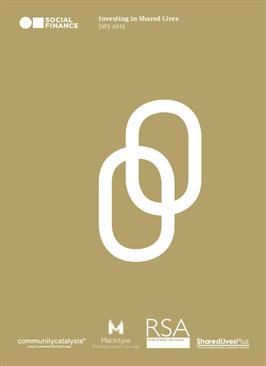Shared Lives offers personalised, quality care where carers share their lives and often their homes with those they support. In 2010, England’s care inspectors, the Care Quality Commission, gave 38% of Shared Lives schemes the top rating of excellent (three star): double the percentages for other forms of regulated care.
There are now around 15,000 people supported through Shared Lives schemes, but the scope for expansion is significant. Over the last six months, with the support of the Cabinet Office, Social Finance, Shared Lives Plus and Community Catalysts have been working closely with four local authorities –Lambeth, Leeds, Manchester and Newham – to explore a model for expanding Shared Lives with social investment. A central element of the work has been identifying which groups of people would most benefit from Shared Lives, and for whom support in Shared Lives would be more cost-effective than other forms of care. Although the primary reason for expanding Shared Lives is the social benefit, the conclusions drawn from this work also indicate that expanding Shared Lives could provide significantly greater value for money than many other forms of care.
Key findings include:
• The average net cost of supporting people with learning disabilities in traditional forms of long-term residential care, nursing care and supported accommodation is £60,000 per person per year, and for people with mental health needs £28,000 per year.
• The average net cost of a long-term Shared Lives arrangement for a person with a learning disability is £34,000 per year, and for someone with mental health needs £20,000 per year.
• The average net savings from a long-term Shared Lives arrangement per-person per year are £26,000 for people with learning disabilities and £8,000 for people with mental health needs.
• Expanding a scheme by 75 placements, 50 for people with learning disabilities and 25 for people with mental health needs, requires around £250,000 of up-front investment and should generate savings of around £1.5 million per year once the scheme reaches full capacity.
pdf 449.6 KB
Contributors


Related reports
-
Move fast and fix things: How to be a public entrepreneur
This report describes the findings from a six-month inquiry where we applied the RSA’s model of change “think like a system, act like an entrepreneur” to the challenges of procuring and scaling innovation through government.
-
Health as a social movement: theory into practice
The RSA and NEF in partnership with NHS England publish a report to develop a community-led health system.
-
Releasing energy for change in our communities: social movements in health
How can we liberate and harness energy for change in our communities? Reflections from the Health as Social Movement project.



